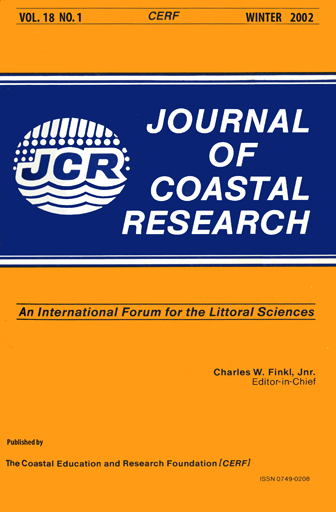Modelling of Suspended Matter Transport from the Oder River
Keywords:
Baltic Sea, Pomeranian Bay, modelling, fine-grained sediment, sediment fluxes, pathways, yearly net transportAbstract
In order to quantify the riverine sediment flux to the Arkona Basin, the transport pathways and fate of fine-grained suspended matter discharged from the Oder River from October 1996 to October 1997 were simulated using the MIKE3 modelling system, including a cohesive sediment transport module. Results indicate that about 550,000 regular tons of sediment are transported to the Arkona Basin annually. There is some indication that transport is episodic and mainly governed by wind events. There is a general tendency for the sediment transported from the Oder to be diverged into a pathway either to the north towards the Arkona Basin (2/3) or to the east towards the Bornholm Basin (1/3) over time-scales of several months. Primary sedimentation along a vertical transsect from the mouth of the Oder River to the Arkona Basin generally takes place in the form of easily resuspended fluffy material. Critical shear stress for the resuspension of this fluff is 0.02 N/m2. Generally, such thresholds are exceeded 5-6 times per month in shallow water (D <10 m) and 1-2 times per month in deep water (D >10 m) during wind events normally only lasting a few hours. Vertical sedimentation fluxes measured in shallow water are less than 10 g/m2/day during short periods with calm weather. A comparison with average rates of 80-115 g/m2/day measured during 3-month observation periods indicates that the resuspension rate in shallow water is about 8-10 times higher than the primary sedimentation rate. The shallow water areas above the 20 m isobath are non-depositional areas acting as temporal deposits for sediment transported from the Oder River through Pomeranian Bay to the Arkona Basin or the Bornholm Basin.


